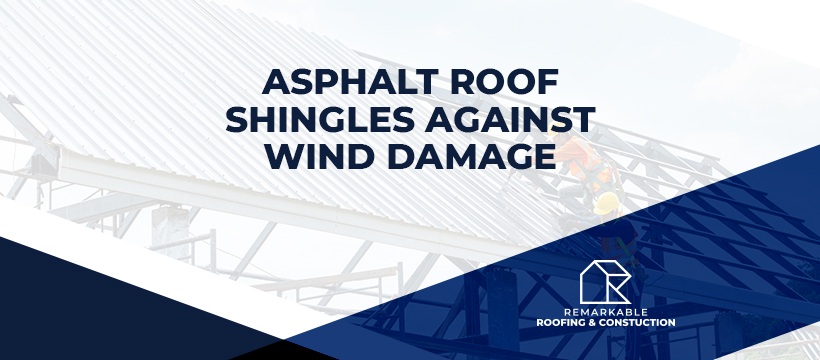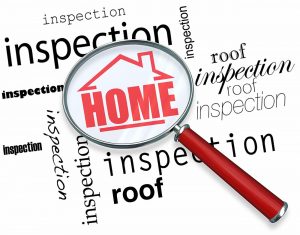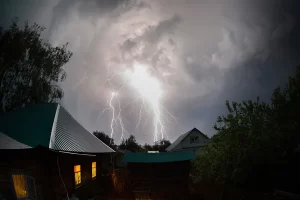The roofing is a simple target for one of Mother Nature’s most volatile and powerful forces — wind. Powerful wind may cause unexpected, devastating roofing damage each time a severe thunderstorm happens. Still, asphalt roofing shingles may also be negatively affected on windy days when there’s no rain, hail, sleet, or snowfall within the forecast. If you’re concerned with prospective roofing damage from the wind on the asphalt shingle roofing, here’s a crash program on why it takes place, how you can spot warning signs of roofing damage, and also the lowdown on asphalt roof shingles that happen to be specifically designed for wind resistance.
How Wind Impacts Asphalt Shingle Roof Structure
Wind doesn’t usually move in a steady, smooth flow — it swirls up, down, sideways, and in circular patterns at different speed rates in reaction to temperature and pressure differences in the Earth’s atmosphere and variations in the land’s topography and landscape. When wind encounters a structure such as your house, it travels in specific reasonably foreseeable ways:
- Wind striking the side of the house travels up and over the roof with various uplift pressure degrees.
- Uplift pressure will be the highest at the edges in the roofline, and the pressure is virtually as high down the roofing edges, which makes these areas particularly prone to wind damage.
- As the wind goes throughout the roofing surface, negative pressure – otherwise known as suction pressure – is generated and may even suck up, or lift, shingles off a roofing outdoor patio.
Aspects That Influence How Wind Impacts Your Asphalt Shingle Roofing
Several variables influence exactly how the wind may impact or harm your roof, which includes its speed and direction if it encounters your house, as well as:
- Your home is positioned, and with the local weather patterns, your home’s roof is a lot more prone to damage living in a hurricane- or tornado-prone region or where great wind occurs regularly.
- Your home’s roof geometry. High-pitched gable rooftops with large overhangs are more vulnerable to wind uplift. In contrast to aerodynamic, four-sided hip rooftops are more durable against damage.
- Other variables. The nailing technique used to put in the shingles, the standard and durability of your fasteners, and installing temperatures could also be a factor inside the roof’s capability to endure the wind.
- Set up flaws. Misaligned shingles, improper nail positioning, improperly sealed flashing, or the possible lack of starter strip shingles can all lead to increased susceptibility to wind.
- Age and status of your roofing. Older roofing with dried-out, damaged, or curled shingles or areas where the sealant bond has failed reaches a greater probability of becoming badly destroyed by the wind.
- Past damage that hasn’t been tackled. Roofing, which includes existing issues, such as damaged shingles, lack of shingles, or lack of flashing, is more prone to incur wind damage with time or endure extensive damage during the severe thunderstorm.
How To Explain For Those Who Have Wind Damage On Asphalt Shingle Roofing?
Some warning signs of roofing wind damage are more apparent than others. After having a severe weather conditions event, significant wind harm to roofing might be highly apparent, such as
- A puncture from the fallen shrub limb
- Sizeable swatches of revealed underlayment where shingles have already been blown off
- Mangled or lacking sections of flashing, or
- Absent hip and ridge shingles
Other indicators might be subtler. Nevertheless, you can spot them once you know what to consider both inside and out. Remember, maintain safety at heart with anything you do, and wear suitable protective equipment. In case you are unable to safely look at the home’s external surfaces or interior for warning signs of roofing damage, please speak to a professional roofing company.
Exterior Evidence of Roof structure Problems
Walk your home’s perimeter to check on for components of shingles and check out the roof for:
- Locations where shingle corners appear slightly elevated, which notifies you the seals may have been damaged
- Narrow lines near the shingle corners may show they may have been switched up and creased
- Scuff markings throughout the roofing area where wind-borne debris has raked throughout the roofing
- Destroyed ridge or soffit air vents
- Cracked or gaping chimney flashing
- Curled, torn, or elevated shingles down the roofing corners
- Deposit of particles such as shrub tree branches or damaged glass around the roofing or maybe in the gutters
Indoor Evidence of Roof structure Damage
You can check for prospective warning signs of wind damage in your home by inspecting your attic and finished living areas. Remember, maintain safety at heart with anything you do. When climbing in your attic, make sure to have a sturdy walking route and wear suitable protective equipment. Once more, if you’re not able to accomplish this safely, please speak to a professional roofing company.
- How to look at the attic for warning signs of roofing damage:
- Go up for the attic while it’s still light outdoors.
- Use a flashlight to check on for water leakages and spots around the underside of your roofing or warning signs of water damage on the ground.
- Turn the lights off and check out the roof decking for any places that daylight is shining through to show damage has happened above.
- In your finished living areas, look for discolored areas around the ceilings and wall surfaces that alert you that water gets in through wind-damaged locations around the roofing.
Asphalt Shingles Intended for Resistance To The Wind May Help Lessen Your Probability of Roofing Damage
The key types of tests of how a shingle performs when in contact with wind are standardized to help consumers choose a shingle that offers the best defense degree about their home. Wind resistance is classified according to one or both specifications published by ASTM International:
ASTM D3161, or perhaps the Common Examination Way of Resistance To The Wind of Steep Slope Roof structure Items (Fan-Induced Approach). This tests strategy measures a shingle’s capability to endure fan-induced wind speeds and involves three categories:
Class A for shingles that passed on tests at 60 mph
Class D for shingles that passed on tests at 90 mph
Class F for shingles that passed on tests at 110 mph
ASTM D7158, or perhaps the Common Examination Way of Resistance To The Wind of Sealed Asphalt Shingles (Uplift Force/Uplift Resistance Approach). This standard assigns a classification to individual shingle products based on their potential to deal with uplift forces when evaluated at certain wind speeds:
Class D resist uplift at wind speeds up to 90 mph
Class G resist uplift at wind speeds up to 120 mph
Class H resist uplift at wind speeds up to 150 mph
Asphalt roofing shingles in the market generally all carry the same wind resistance classifications: ASTM D3161 Class F and ASTM D7158 Class H. Nonetheless, warranted wind coverage can vary by specific product, so make sure to check the manufacturer’s item info, guarantee specifics, and installing guide. A manufacturer’s installation guide and guarantee specifics will stipulate how shingles should be put in to get warranted wind coverage for certain wind speeds.
Your city, town, or county planning office can inform you on what degree of resistance is needed to satisfy local building codes. Then, you only must check the item label on a shingle’s wrapper to discover its ASTM D3161 or ASTM D7158 wind resistance classification.
For more information on our products made for improved roofing wind resistance, contact us and avail our services now!







